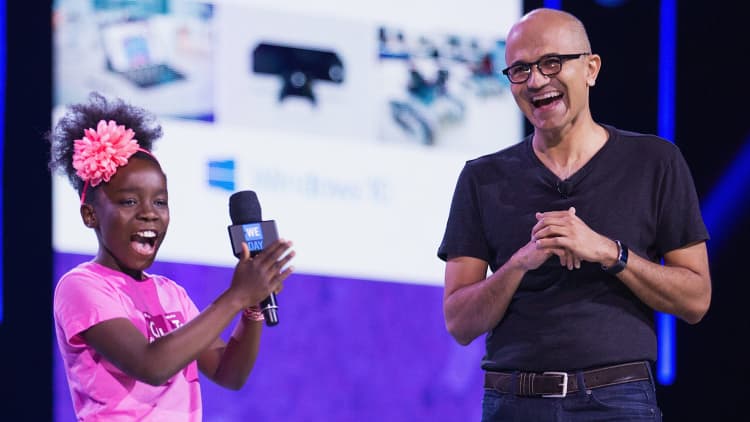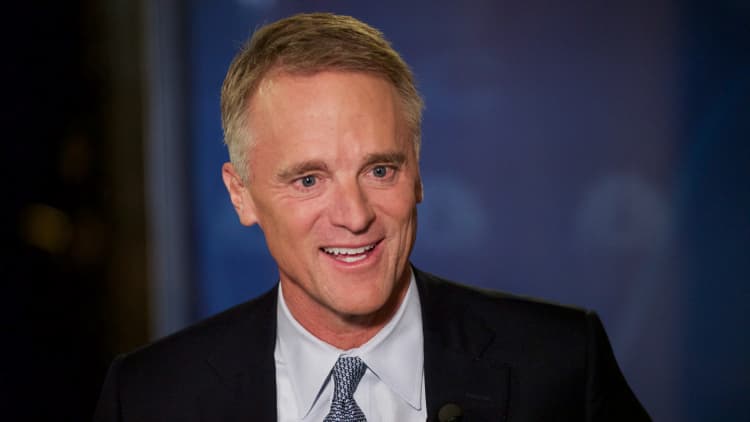In order to become a CEO, you're going to have to learn to stand out.
Researchers Elena L. Botelho and Kim R. Powell conducted a 10-year study of over 17,000 C-suite executives as a part of the CEO Genome Project in order to discover what sets successful people apart.
They found that it takes the average CEO 24 years to become head honcho but that some people — who they refer to as "CEO sprinters" — do it even faster.
After closely studying these CEO sprinters, Botelho and Powell came to a surprising conclusion: The quickest way to the top is not perfection. The people who became CEOs the fastest did not have MBAs from Ivy League schools and they weren't long-time employees with squeaky clean track records.
"Sprinters don't accelerate to the top by acquiring the perfect pedigree," they write for Harvard Business Review. "They do it by making bold career moves over the course of their career that catapult them to the top."
Researchers identified three specific catapults that allowed 97 percent of the sprinters to reach CEO status. Here are the things that help this group find success, and fast:
Go small to go big
"The path to CEO rarely runs in a straight line," write Botelho and Powell, with the help of Nicole Wong. "Sometimes you have to move backward or sideways in order to get ahead."
The study found that 60 percent of sprinters opted to take a smaller role with greater responsibility at some point in their careers.
By choosing to work for a smaller company, moving to a leadership role on a young team or launching a new initiative, sprinters were able to gain significant management experience that later catapulted them ahead of their peers.
Adam Poswolsky, author of "The Quarter-Life Breakthrough," says that thinking about a career like a straight and simple ladder is a mistake that limits your ability to experiment and reach your fullest potential.
Instead, Poswolsky says that young professionals should conceptualize their careers as a series of jumps to different lily pads in a pond.
Make a big leap
Over a third of the sprinters made a big leap in the first decade of their careers. These CEOs were handed an opportunity that was beyond their experience and rather questioning if they were qualified, they went for it.
By accepting an opportunity that they were not fully prepared for, these sprinters learned on the job and ended up gaining experience that benefited them later on in their careers.
If you haven't had a golden opportunity fall into your lap yet, don't fear. Botelho and Powell say that CEO hopefuls can help make their own luck by seeking out big projects, constantly asking for more responsibilities and saying "yes," no matter what.
Brian Wong, the 26-year-old CEO of mobile advertising company Kiip says that the most common mistake that young professionals make is failing to build confidence.
"Thinking that people won't take you seriously before you enter a conversation is one of the biggest mistakes [early-career] professionals make," Wong tells CNBC Make It. "Confidence and poise are critical."

Inherit a big mess
One of the fastest ways to prove that you are prepared to be a CEO is to prove your worth during a difficult time say Botelho and Powell. Their research found that over 30 percent of sprinters led a team through a big mess.
"When faced with a crisis, emerging leaders have an opportunity to showcase their ability to assess a situation calmly, make decisions under pressure, take calculated risks, rally others around them, and persevere in the face of adversity," they write. "In other words, it's great preparation for the CEO job."
Drew Westervelt, the 32-year-old COO and founder of Hex says that persistence and perseverance through difficult times is a necessary part of finding career success and reaching the c-suite.
"In any endeavor, there are almost always significantly more valleys than peaks," he tells CNBC Make It. "Staying positive to keep driving forward is what the process is all about. Each challenge is a learning experience you can build from and grow from."
Like this story? Like CNBC Make It on Facebook
Don't miss:




